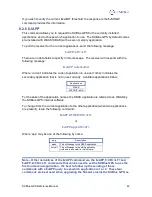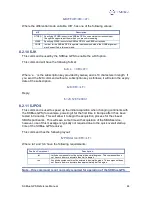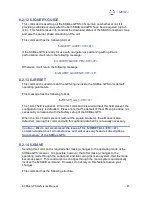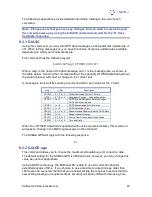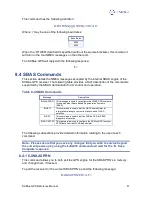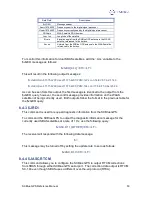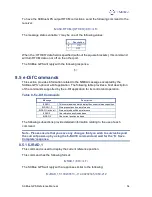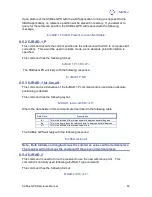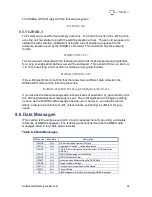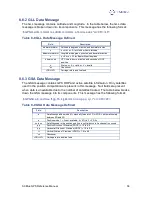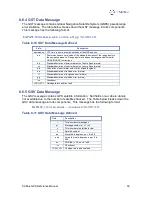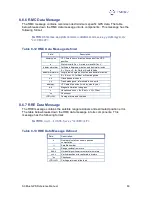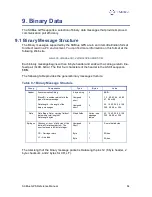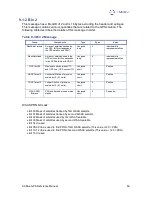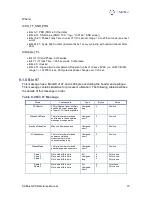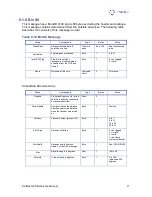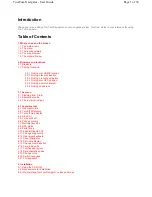
SXBlue GPS Reference Manual
56
The SXBlue GPS will reply with the following response:
$>JRAD,2,OK
8.5.5 $JRAD,3
This command is used for two primary purposes. The first is to invoke the e-Dif function
once the unit has started up (with the e-Dif application active). The second purpose is to
update the e-Dif solution (calibration) using the current position as opposed to the
reference position used by the $JRAD,2 command. This command has the following
format:
$JRAD,2<CR><LF>
The receiver will respond with the following command if it has tracked enough satellites
for a long enough period before you sent the command. This period of time can be from
3 to 10 minutes long and is used for modeling errors going forward.
$>JRAD,3,OK<CR><LF>
If the e-Dif algorithms do not find that there has been sufficient data collected, the
SXBlue GPS will send the following response:
$>JRAD,3,FAILED,Not Enough Stable Satellite Tracks
If you receive the failure message after a few minutes of operation, try again shortly until
the ‘OK’ acknowledgement message is sent. The e-Dif application will begin operating
as soon as the $JRAD,3,OK message has been sent, however, you will still need to
define a reference position for e-Dif, unless relative positioning is sufficient for your
needs.
8.6 Data Messages
(This section is the same as section 5.2 and is repeated here for providing a complete
reference of NMEA messages). The following subsections describe the NMEA data
messages listed in the Table below in detail.
Table 8-6 Data Messages
Message
Max Rate
Description
GPGGA
5 Hz
Global Positioning System Fix Data
GPGLL
5 Hz
Geographic Position – Latitude/Longitude
GPGSA
1 Hz
GNSS (Global Navigation Satellite System) DOP and Active
Satellites
GPGST
1 Hz
GNSS Pseudorange Error Statistics
GPGSV
1 Hz
GNSS Satellites in View
GPRMC
5 Hz
Recommended Minimum Specific GNSS Data
GPRRE
1 Hz
Range residual message
GPVTG
5Hz
Course Over Ground and Ground Speed
GPZDA
5 Hz
Time and Date
RD1
1 Hz
SBAS diagnostic information (proprietary NMEA message)

